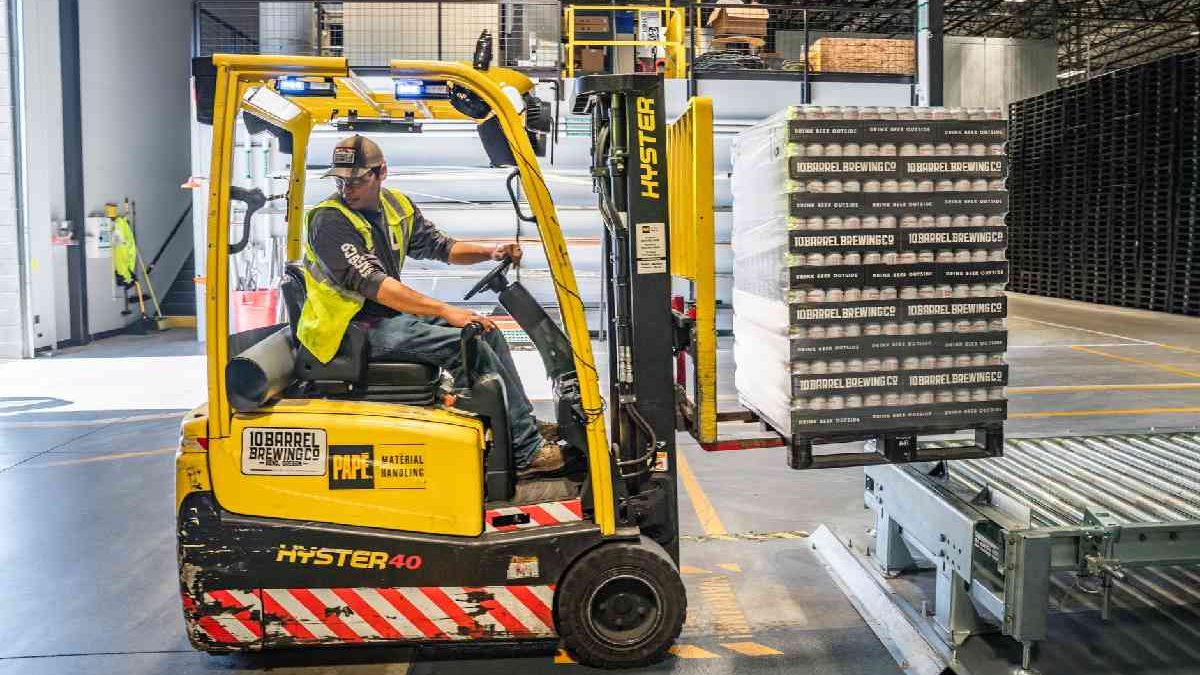There are a number of different uses and designs for conveyors. Among the more common types are belt and roller conveyors. Conveyors can be used to create buffers, deliver products in a particular order and move products on a production line.
Conveyors are a highly flexible form of industrial equipment and can improve efficiency, safety and productivity when correctly specified and installed.
Table of Contents
Conveyor Types
Belt conveyors
The belt system, which is frequently referred to as pvc conveyor belts by laymen, is a very simple type of conveyor system that only involves moving objects from one end of the system to the other. Although belt conveyors cannot be used to sequence or buffer parts, the fact that they are so simple to operate and use makes them a very common form of conveyor type.
Belt conveyors normally move the belt over a supporting steel plate so that it slides as the belt moves, or over the top of rollers that are very closely spaced together. These are known as conveyor rollers.
Gravity roller conveyors
These are also very simple and affordable conveyor types that make use of a series of rollers that are mounted atop a side frame, thus providing the rolling surface. Parts are able to move by themselves after having been mounted atop a decline angle.
If gravity conveyors need to be used differently sized and weighing parts however, the speed and angle will need to be controlled as damage could result from parts running into one another. That being said a gravity roller table is a good starting point in comparison to having to carry parts from one place to another and represents a simple but effective improvement in productivity.
Chain conveyors
Chain conveyors are ideal for heavier items in particular, especially those with an uneven lower surface. A few contact points on the load’s bottom are provided by the conveyor chain, and the product is carried forward when the chain moves.
Chain conveyors are often used in the carrying of large industrial containers and pallets. Products can even be mounted atop a fixture and the fixture then carried via the chains if required, something that is common in auto plants. Chain conveyors are very heavy duty and usually move fairly slowly.
Live roller conveyor
When a gravity conveyor’s rollers are combined with a chain-driven system’s chains, the rollers can be linked together. With the addition of a motor and a gearbox the result is a live roller conveyor system, a heavy duty system for handling material that can be used in the transportation of pallets, containers, tires and seats (on pallets or skids).
Products can also be buffered or accumulated if the system has loose plastic sleeves fitted over the rollers, allowing the top product to remain still even while the rollers keep moving. The chains are linked via one roller to another on the side.
Other types of conveyors include the likes of the motorised roller conveyor, slat conveyor and motorised overhead conveyor.
Read more technology blogs F95Zone.
Also Read: Top 10 Automation Testing Tools in 2021
Related posts
Recent Posts
Streamline Logistics with Freight Forwarding ERP Software
Freight Forwarding ERP Software: The international trade exists on the basis of the smooth flow of goods. However, it is…
Quantum-Safe Cryptography for Crypto Security
Cryptography for Crypto Security – In the ever-evolving landscape of cybersecurity, the emergence of quantum computing presents a formidable challenge….



